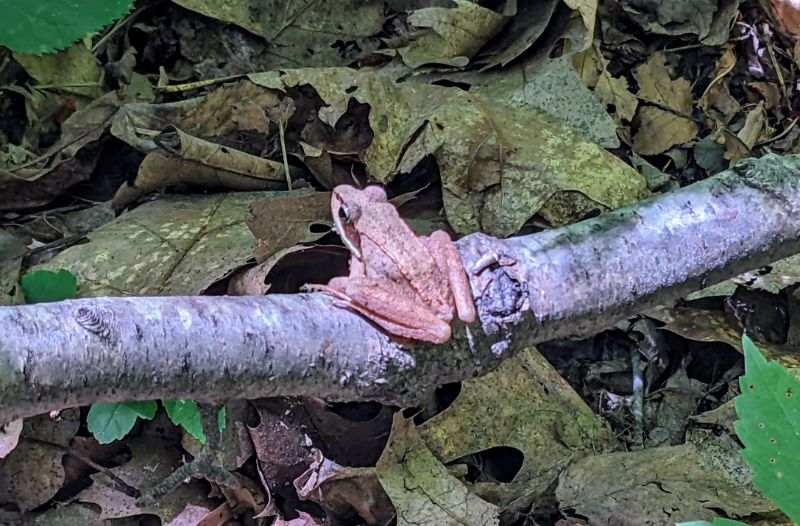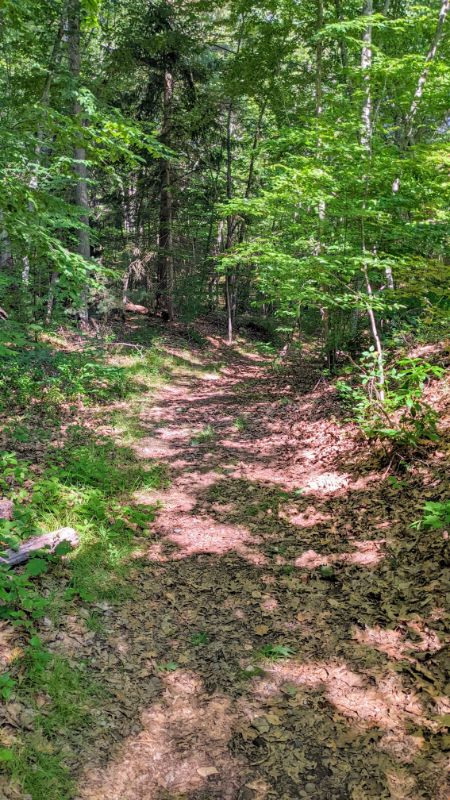
Homecoming at the Belding Wildlife Management Area
Sometimes in life, you get lucky.
Growing up on the fringes of the rural, woodland areas in Connecticut I was exposed to natural beauty on a daily basis. For certain, this inspired my love of nature, and career as a zoologist and environmental scientist.
And it wasn’t until I left this area that I realized I took where I grew up for granted.
These woods would eventually become the Belding Wildlife Management Area and Tankerhoosen Wildlife Management Area, and I had to show Rhonda these places.
When I was a kid, the massive tracts of woods bordering our neighborhood were privately owned, and trespassing was not allowed. But I had the good fortune of living across the street from a kind but cantankerous old man who worked as the caretaker of this property. And he was a friend of my family.
His cranky nature made most of the neighborhood kids terrified of him, but he was happy to take me under his wing (with double-barreled shotgun in hand) and show me some of the cooler areas in the woods. And since he knew that I wasn’t going to do anything stupid to the property he was caring for, I had his permission to explore the woods on my own.
When I left the area permanently for college in the late 1980s, I was always concerned that these woods would be sold to developers. In areas nearby, lots were being sold and large houses built, and I worried that the woods would forever lose their Tolkienesque allure.
Thankfully, some land development stories have happy endings.
Once In A While, Nature Scores a Win
Unbeknownst to me, in the 1980s and 2010s the Belding and Bissell families who owned these woodlands donated them to the Connecticut Department of Energy and Environmental Protection. Now they make up the Belding Wildlife Management Area and the Tankerhoosen Wildlife Management Area and will be forever protected as part of the larger Tankerhoosen River Valley greenway.
I couldn’t be happier.
Formal trail systems were eventually established in these areas for everyone to enjoy, with signage and interpretive areas to educate the public. And these trails were integrated into the larger 50-mile Shenipsit Trail System, which I am tempted to walk from end to end someday.
I encourage everyone reading this to follow the links above which describe the history of the properties as well as their ecological significance. It feels weird to have grown up next to areas of such importance without ever knowing these details.
I just knew that these places were special.
Exploring the Belding Wildlife Management Area
Since Rhonda did such a great job showing me the trail systems near her home in Ohio, I had to return the favor.
So we started by spending the next couple of days exploring the trails of the Belding Wildlife Management Area, which has an unmarked trailhead connected to a street in our neighborhood.
Here is a trail map link.

Past our trailhead and down a hill, we quickly encountered the Tankerhoosen River.

Following the blue-blazed trail south along the river (part of the Shenipsit Trail System) is a very pretty walk, through pine and hemlock forests. It smelled like Christmas.

Eventually, we arrived at the main mill pond and dam from back in the day.




We decided to take the purple-blazed trail south from the pond, which eventually took us to a wildflower meadow with many side trails to choose from.




Valley Falls Park Detour
One trail from the wildflower meadow led directly to Valley Falls Park, so we checked that out!


Valley Falls is a beautiful area, and I have many fond memories of family trips to swim in the lake there.

The water level was low from drought, so not many waterfalls to speak of when we were there.
There is an entire trail system to explore, but we left that for another day. Instead, we walked around the lake…



And picked up a blue-blazed Shenipsit Trail connector heading north that would eventually take us back to the Belding WMA.
Returning Home Through Belding WMA

This part of the Shenipsit trail had steep areas but very interesting geology with mica, granite, and quartz rock formations.

We eventually reconnected with the Belding WMA system, at the yellow-blazed trail. This trail took us past habitat reclamation areas where invasive plant species were removed to support natural wildlife populations.

The trail took us past an abandoned mill pond that was largely filled in due to natural sedimentation. But the staircase dam was still intact.

I remember as few as six years ago when the pond was still present and the dam waterfall flowed. Perhaps it still does when not under drought conditions.
And then finally the yellow-blazed trail rejoined the blue-blazed trail and took us back to where we first approached the Tankerhoosen River.

We then crossed the bridge and made our way back home.
We estimate that this was about a 6-mile hike in one big loop!
A great day with good weather.
In an upcoming post, we will explore sections of the Tankerhoosen Wildlife Management Area that can be accessed by the northern branch of the Shenipsit Trail!
Thanks for reading!
If our posts have saved you time, money, or are enjoyable in some other way, BUY US A COFFEE! It helps cover the costs of our blog, keeps our blog ad-free, and motivates us to continue posting about our experiences.
And leave a comment below and subscribe to get email notifications whenever we post!
Follow Two Travel Turtles on Facebook and X.


2 thoughts on “Homecoming at the Belding Wildlife Management Area”
That looks and sounds like an amazing area. Lovely pictures.
It is. Amazing place.